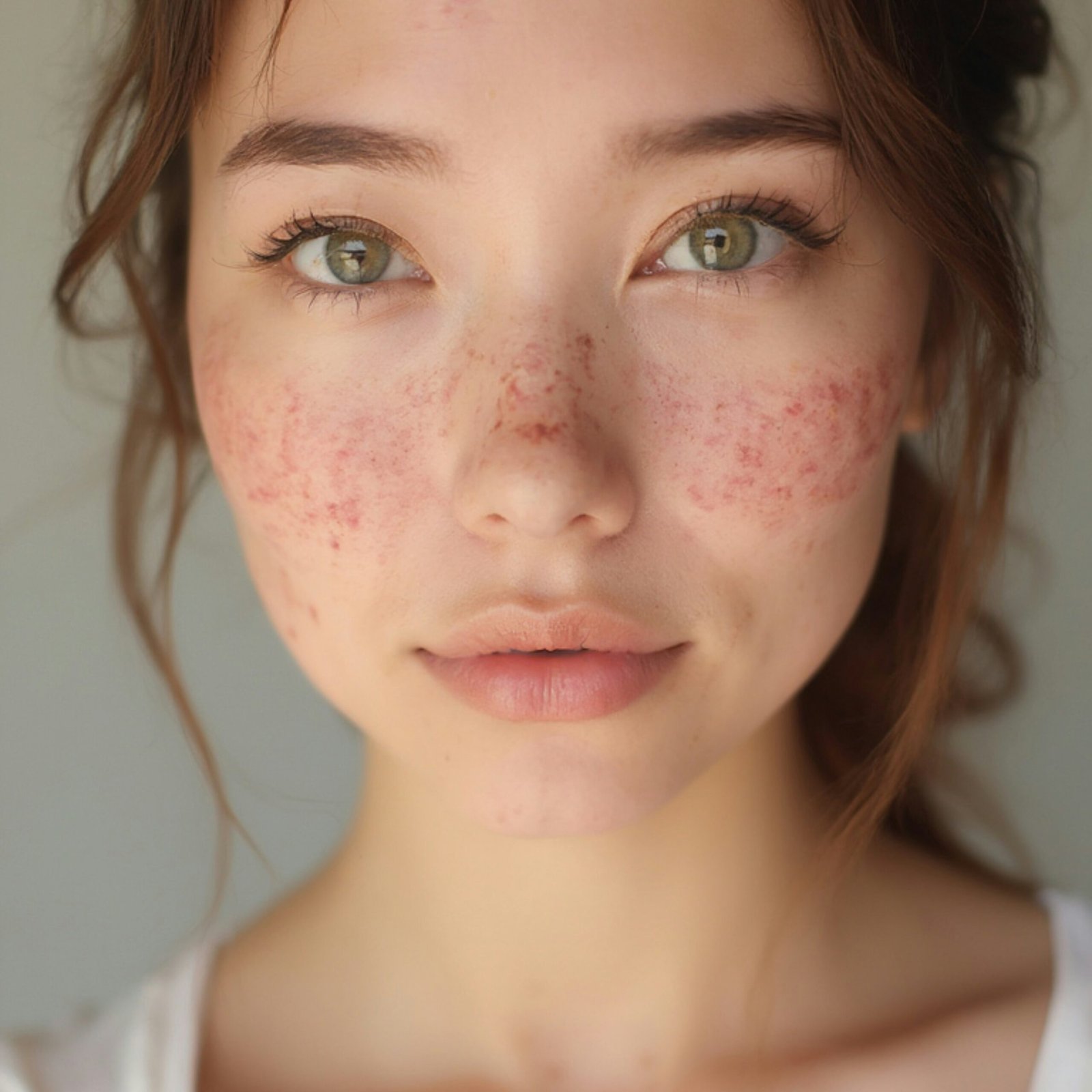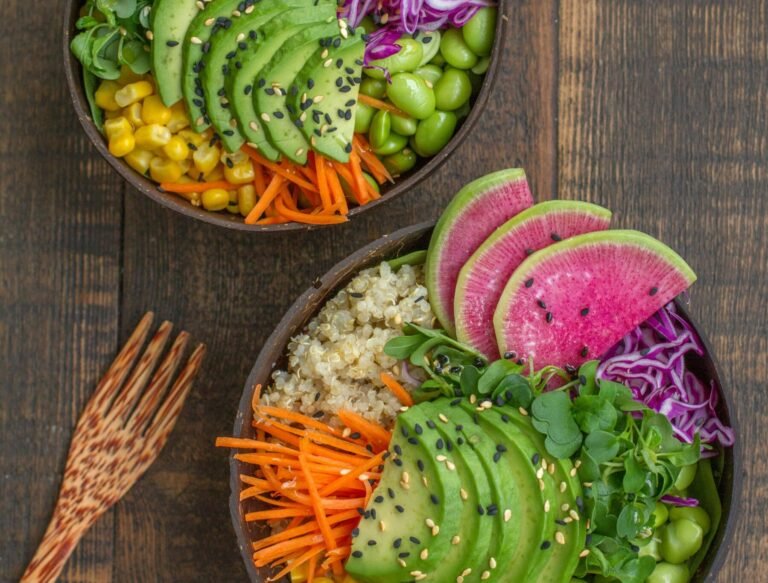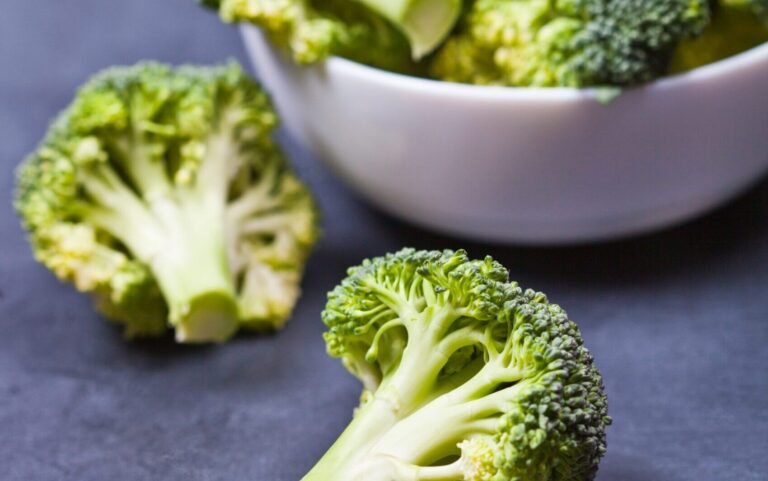Hormonal Acne: A Science-Based Guide to Finding Balance for Clearer Skin

[At Lefiano, our content is meticulously researched and reviewed against reputable scientific sources to ensure accuracy.]
Dealing with hormonal acne can be a deeply frustrating experience. Just when you think you’ve left breakouts behind, new blemishes appear, often stubbornly clustered along the jawline, chin, and neck. It can feel like a confusing and relentless cycle, immune to your best topical treatments. If this sounds familiar, you’re not alone, and more importantly, you’re not without options.
At Lefiano, we believe that understanding the science behind the issue is the first and most empowering step toward finding a considered, sustainable path forward. This comprehensive, evidence-based guide is designed to bring deep clarity to hormonal acne. We will explore the biological cascade that causes it, what the latest research says about diet and lifestyle factors, and how you can support your skin from the inside out.*
What Causes Hormonal Acne? The Science Behind Your Skin
At its core, hormonal acne is driven by a complex cascade of biological signals that influence your skin’s oil production and inflammation levels.* It’s not just one hormone acting in isolation, but rather a series of interconnected biochemical events.*
The Androgen Trigger
The story begins with hormones called androgens, which include testosterone.* Androgens signal your skin’s sebaceous glands to produce more sebum (oil).* This increase in oil production is the initial trigger, but it’s what happens next in the biological cascade that amplifies the issue and leads to the characteristic breakouts of hormonal acne.*
The IGF-1 Connection: The Critical Pathway
This is perhaps the most important piece of the hormonal acne puzzle, and understanding it changes everything about how we approach treatment.* Research has clearly established that Insulin-like Growth Factor-1 (IGF-1) is a primary driver of hormonal acne.*
What is IGF-1?
IGF-1 is a hormone produced primarily by the liver in response to growth hormone.* While it plays important roles in growth and development during adolescence, elevated levels of IGF-1 in adults have been strongly linked to acne development.*
The Research is Clear:
Multiple studies have demonstrated that individuals with acne have significantly higher levels of IGF-1 compared to those without acne.*
- A foundational 1995 study measuring serum IGF-1 levels in women with postadolescent acne found that IGF-1 levels in acne patients (1.26 ± 0.52 U/ml) were significantly higher than in controls (0.96 ± 0.32 U/ml), with a p-value less than 0.001, indicating this was not a chance finding.*
- A 2005 study published in Archives of Dermatology examined the correlation between IGF-1 and acne lesion counts in adult women, finding that IGF-1, along with certain androgens, correlated positively with acne severity.* The research concluded that increased IGF-1 levels in addition to androgens may influence acne development.*
- Research published in 2016 examined IGF-1 gene polymorphisms and found that individuals with certain genetic variants that lead to higher IGF-1 production had 4.29 times higher odds of having acne and 3.08 times higher odds of having more severe acne.* Plasma IGF-1 levels positively correlated with acne severity (p = 0.01).*
- A 2025 study using a rat model of acromegaly (a condition characterized by excess growth hormone and IGF-1) demonstrated the mechanisms by which elevated GH and IGF-1 levels contribute to acne-like skin changes, providing direct evidence of this biological pathway.*
How IGF-1 Drives Acne:
IGF-1 promotes acne through multiple mechanisms:*
- Increased Sebum Production: IGF-1 stimulates sebaceous glands to produce more oil, creating an environment where acne can thrive.*
- Keratinocyte Proliferation: Research shows that IGF-1 activates the IGF-1 receptor system in the epidermis, inducing excessive keratinocyte (skin cell) proliferation.* This leads to the “sticky” skin cells that clog pores.*
- Inflammatory Biomarkers: Laboratory studies demonstrate that IGF-1 increases the expression of inflammatory biomarkers in sebocytes (the oil-producing cells).* This amplifies the inflammatory response that makes acne red, painful, and difficult to resolve.*
- Lipid Production: Research using cultured sebocytes found that treatment with IGF-1 significantly increased lipid (fat) production, further contributing to the oily environment that supports acne bacteria.*
This combination of excess oil, clogged pores with sticky skin cells, and inflammation creates the perfect environment for the red, tender, cystic blemishes that are characteristic of hormonal acne.*
The Diet-Acne Connection: Two Pathways to Elevated IGF-1
Now that we understand IGF-1’s central role, the question becomes: what causes IGF-1 levels to rise? The answer, increasingly supported by research, points to two major dietary factors: high-glycemic foods and dairy consumption.* Both can increase IGF-1 levels through different mechanisms, and this is the shared pathway that connects diet to hormonal acne.*
High-Glycemic Foods and the Insulin-IGF-1 Axis
When you consume foods with a high glycemic index (foods that cause rapid spikes in blood sugar), your body responds by releasing insulin to manage that blood sugar.* This insulin spike doesn’t just affect blood sugar; it triggers a cascade of hormonal events.*
The Mechanism:
High insulin levels stimulate the liver to produce more IGF-1.* Additionally, insulin decreases the production of IGF binding proteins, meaning more “free” IGF-1 is circulating in your bloodstream and able to act on your sebaceous glands.* This is the insulin-IGF-1 axis, and it’s a well-established pathway in acne research.*
What The Clinical Trials Show:
The evidence for low-glycemic diets improving acne is remarkably consistent:*
Randomized Controlled Trial #1 (2007): A landmark study published in the American Journal of Clinical Nutrition followed 43 young males with acne for 12 weeks.* Those assigned to a low-glycemic-load diet (25% protein, 45% low-GI carbohydrates) experienced significantly greater reductions in total acne lesions compared to the control group (-23.5 lesions vs. -12.0 lesions, p = 0.03).* The low-glycemic-load diet also improved insulin sensitivity, directly demonstrating the metabolic mechanism behind the improvement.*
Randomized Controlled Trial #2 (2007): Another 12-week study of 43 male acne patients found that the low-glycemic-load diet group had greater reduction in lesion counts (-21.9) compared to controls (-13.8, p = 0.01).* Importantly, the diet reduced the free androgen index and increased IGF binding protein-1, showing clear hormonal changes.*
Short-Term Intervention Study (2008): A pilot feeding study examined hormonal markers in acne patients after just 7 days on a low-glycemic-load diet.* Results showed significant differences in insulin resistance (HOMA-IR) between the low-GI and high-GI groups at day 7, with improvements visible within one week.*
2-Week RCT (2018): A randomized controlled trial published in the Journal of the Academy of Nutrition and Dietetics examined 66 adults with moderate to severe acne.* The low-glycemic-index/glycemic-load diet group showed a significant decrease in IGF-1 concentrations after just 2 weeks (from 267.3 to 244.5 ng/mL, p = 0.049), directly demonstrating the mechanism by which dietary changes affect acne.*
Recent 2024 Study: A 2024 clinical trial published in Cureus examined 50 females with acne over 12 weeks.* Those receiving dietary counseling emphasizing low-glycemic-load foods showed significant improvement in acne severity (average score decreased from 2.68 to 1.56), and 45% achieved low glycemic-load scores by the end of the study.*
The Takeaway:
Multiple independent randomized controlled trials consistently demonstrate that following a low-glycemic diet can reduce IGF-1 levels, improve insulin sensitivity, and lead to measurable reductions in acne lesions.* This is not anecdotal evidence; this is rigorous science showing a clear cause-and-effect relationship.*
Dairy Consumption and IGF-1
The second major dietary contributor to elevated IGF-1 is dairy consumption, particularly milk.*
Why Dairy May Affect Acne:
Milk naturally contains IGF-1 (because cows produce it just like humans do), but more importantly, milk contains proteins and bioactive molecules that stimulate your body to produce more of its own IGF-1.* Even after pasteurization, these compounds survive and remain bioactive.*
What The Research Shows:
The evidence linking dairy consumption to acne has grown substantially in recent years:*
Systematic Review and Meta-Analysis #1 (2018): A comprehensive meta-analysis published in Nutrients examined 14 studies including 78,529 participants (23,046 with acne, 55,483 controls) aged 7-30 years.* The results were striking:*
- Any dairy consumption: 25% increased odds of acne (OR 1.25)*
- Any milk consumption: 28% increased odds (OR 1.28)*
- Low-fat/skim milk: 32% increased odds (OR 1.32)*
- Whole milk: 22% increased odds (OR 1.22)*
Notably, the association was strongest for skim milk, suggesting the relationship isn’t simply about fat content but rather about the protein and hormonal factors in milk itself.*
The dose-response analysis was particularly illuminating: compared to less than weekly intake, drinking 2-6 glasses of milk per week increased odds by 24%, 1 glass per day increased odds by 41%, and 2 or more glasses per day increased odds by 43%.*
Systematic Review and Meta-Analysis #2 (2018): A second independent meta-analysis published in Clinical Nutrition analyzed similar data and found:*
- Total milk consumption: 48% increased odds of acne (OR 1.48)*
- Skim milk: 82% increased odds (OR 1.82)*
- Low-fat milk: 25% increased odds (OR 1.25)*
Meta-Analysis #3 (2018): A third meta-analysis published in the Journal of the European Academy of Dermatology and Venereology focused specifically on milk consumption, analyzing data from 13 observational studies and found milk consumption was positively associated with acne risk (OR 1.16, 95% CI 1.09-1.24).* Subgroup analysis revealed stronger associations with skim milk (OR 1.24) than low-fat (OR 1.14) or full-fat milk (OR 1.13).*
Interesting Finding About Fermented Dairy:
Importantly, research has not consistently found the same association between fermented dairy products like yogurt and cheese and acne breakouts.* This suggests the relationship is complex and may relate to how fermentation changes the bioactive compounds in dairy, though more research is needed to fully understand this distinction.*
The AAD Statistic:
Data cited by the American Academy of Dermatology found that individuals who drank two or more glasses of skim milk per day were 44% more likely to have acne, providing a concrete, clinically relevant benchmark.*
An Evidence-Based, Holistic Approach to Hormonal Acne
Managing hormonal acne effectively requires a supportive, multi-faceted approach that addresses these internal triggers.* Your diet and lifestyle are powerful tools for influencing the internal environment that contributes to skin health.*
1. Embrace a Low-Glycemic Diet
Based on the compelling research evidence, adopting a low-glycemic eating pattern is one of the most scientifically supported dietary strategies for hormonal acne.*
What To Include:
- Non-starchy vegetables: Leafy greens, broccoli, cauliflower, bell peppers, zucchini, asparagus*
- Legumes: Lentils, chickpeas, black beans, kidney beans (excellent protein and fiber)*
- Whole grains: Steel-cut oats, quinoa, brown rice, bulgur*
- Nuts and seeds: Almonds, walnuts, pumpkin seeds, chia seeds, flaxseeds*
- Fresh fruits: Berries, apples, pears, citrus (in moderation)*
What To Minimize:
- High-glycemic processed carbohydrates: White bread, white rice, refined pasta*
- Sugary foods and beverages: Candy, baked goods, soda, sweetened drinks*
- Processed snacks: Chips, crackers, pretzels made with refined flour*
The goal is to choose foods that provide steady, sustained energy without causing dramatic insulin and IGF-1 spikes.*
2. Consider Your Dairy Intake Mindfully
Given the substantial research evidence linking dairy consumption, particularly skim milk, to increased acne risk, it’s worth examining your own dairy intake.*
If You Currently Consume Dairy:
- Try a trial elimination: Consider reducing or eliminating dairy for 4-6 weeks to see if your skin improves.* This is a personal experiment to understand your own body’s response.*
- If you choose to continue with dairy: Be mindful of quantity and type. The research suggests that higher intakes (2+ glasses daily) and skim milk show the strongest associations.*
- Fermented options: Yogurt and cheese have not shown the same consistent associations in research, though individual responses vary.*
Plant-Based Alternatives:
- Unsweetened plant milks: Almond milk, oat milk, soy milk, coconut milk (choose unsweetened to avoid added sugars)*
- Nutritional yeast: For a cheesy flavor in cooking*
- Calcium-rich plant foods: Leafy greens, fortified plant milks, tofu made with calcium sulfate, tahini*
It’s important to note that the relationship between diet and acne is individual, and some people are more sensitive to these triggers than others.* The research provides strong population-level evidence, but your personal response is what matters most.*
3. Focus on Anti-Inflammatory Whole Foods
Beyond glycemic load and dairy, emphasizing an overall anti-inflammatory dietary pattern can support skin health:*
- Colorful vegetables and fruits: Rich in antioxidants that help calm systemic inflammation*
- Healthy fats: Avocados, extra virgin olive oil, walnuts, flaxseeds, chia seeds provide anti-inflammatory omega-3 fatty acids*
- Herbs and spices: Turmeric, ginger, garlic have natural anti-inflammatory properties*
- Green tea: Contains polyphenols with antioxidant and anti-inflammatory effects*
4. Manage Stress Effectively
Chronic stress elevates cortisol, a hormone that can disrupt your entire endocrine system and worsen skin inflammation.* Research shows that stress can trigger or exacerbate acne through multiple pathways.*
Stress Management Strategies:
- Mindfulness meditation: Even 10 minutes daily can reduce cortisol levels*
- Yoga: Combines movement, breathwork, and stress reduction*
- Time in nature: Walking outdoors has documented stress-reducing benefits*
- Creative activities: Art, music, or any activity that brings you joy and helps you decompress*
- Adequate downtime: Protecting time for rest and relaxation in your schedule*
5. Prioritize Quality Sleep
Your body repairs itself while you sleep, including skin renewal and hormone regulation.* Lack of quality sleep can increase stress hormones and inflammation, directly affecting your skin.*
Sleep Hygiene Practices:
- Aim for 7-9 hours: This is the optimal range for most adults*
- Consistent schedule: Go to bed and wake up at similar times, even on weekends*
- Create a sleep sanctuary: Cool, dark, quiet room optimized for rest*
- Limit screens before bed: Blue light can interfere with melatonin production*
- Avoid caffeine after noon: Caffeine has a long half-life and can disrupt sleep quality*
6. Stay Hydrated
Adequate water intake supports all bodily functions, including healthy skin cell turnover and toxin elimination.*
- Aim for 8-10 glasses daily: More if you’re active or in a hot climate*
- Herbal teas count: Unsweetened herbal teas contribute to hydration*
Targeted Nutritional Support: The Role of DIM
For many women, hormonal acne is closely tied to how the body metabolizes estrogen.* This is where understanding Diindolylmethane (DIM) becomes relevant.*
As we explained in depth in our comprehensive guide What is DIM? A Clear Guide to This Key Nutrient for Hormonal Balance, this natural compound produced from cruciferous vegetables (like broccoli, kale, and cauliflower) plays a key role in supporting the body’s natural process of metabolizing estrogen efficiently.*
How This Relates to Acne:
Research suggests that DIM may help promote a favorable balance of estrogen metabolites, specifically favoring the formation of 2-hydroxyestrone over 16α-hydroxyestrone.* By supporting healthy estrogen metabolism, DIM may help maintain a more balanced hormonal environment, which in turn can support clearer skin.*
While eating cruciferous vegetables regularly is excellent for overall health, obtaining a consistent, concentrated amount of the compounds that form DIM through diet alone can be challenging.*
Lefiano DIM Ultra: Thoughtful Support for Hormonal Balance
At Lefiano, our DIM Ultra formula was created with women navigating hormonal challenges in mind. It provides:*
- 350mg of DIM – A potent dose aligned with research on hormone balance support*
- 100mg Broccoli Extract – A natural source of glucosinolates from cruciferous vegetables*
- BioPerine® – Clinical research demonstrating enhanced nutrient absorption*
This formula is designed to complement a healthy, low-glycemic, plant-based diet, providing targeted support for the body’s natural process of balancing hormones from within.*
BioPerine® is a registered trademark of Sabinsa Corporation, USA.
Learn More About Lefiano’s DIM Ultra
When to Seek Professional Care
While dietary and lifestyle approaches can be powerful tools for managing hormonal acne, certain situations warrant professional medical guidance:*
Consult a Healthcare Provider or Dermatologist If:
- Your acne is severe, painful, or cystic*
- You’re experiencing scarring or post-inflammatory hyperpigmentation*
- Your acne is significantly impacting your quality of life or self-esteem*
- You’ve tried dietary and lifestyle modifications for 3-6 months without improvement*
- You’re experiencing other symptoms of hormonal imbalance (irregular periods, excessive hair growth, hair loss)*
- You’re considering prescription treatments or hormone therapy*
Remember, there’s no shame in seeking help, and dermatologists have many effective treatment options available.*
The Takeaway: A Science-Based Path Forward
Clearing hormonal acne is often a journey that goes beyond topical skincare products.* It involves a considered, evidence-based approach that addresses the internal hormonal and metabolic environment driving breakouts.*
The research is clear: elevated IGF-1 is a primary driver of hormonal acne, and both high-glycemic diets and dairy consumption can increase IGF-1 levels through well-established pathways.* Multiple randomized controlled trials demonstrate that adopting a low-glycemic diet can reduce IGF-1 and improve acne, while systematic reviews of tens of thousands of participants confirm the dairy-acne association.*
By focusing on a nourishing, low-glycemic, plant-based diet, being mindful of potential triggers like dairy, managing stress effectively, prioritizing quality sleep, and considering targeted nutritional support through compounds like DIM, you can provide your body with the foundational tools it needs to find balance and achieve healthier, clearer skin.*
This isn’t about perfection or restrictive eating. It’s about understanding the science, making informed choices, and giving your body the support it needs to function optimally. Your journey to clearer skin starts from within.*
For More Information:
- What is DIM? Complete Guide to Hormone Balance – Deep dive into estrogen metabolism support
- Hormone Balancing Foods: 5 Essential Groups – Comprehensive nutrition guide
- Our Brand Story – Learn about Lefiano’s commitment to science and transparency
Medical Disclaimer
Disclaimer: The information provided on this site is for educational purposes only and is not intended as a substitute for professional medical advice, diagnosis, or treatment. The statements on this page have not been evaluated by the Food and Drug Administration (FDA). Always seek the advice of your physician or other qualified health provider with any questions you may have regarding a medical condition. Never disregard professional medical advice or delay in seeking it because of something you have read on this website. Our product, DIM Ultra, is a dietary supplement and is not intended to diagnose, treat, cure, or prevent any disease.
References
- Deplewski, D., & Rosenfield, R. L. (2000). Role of hormones in pilosebaceous unit development. Endocrine Reviews, 21(4), 363-392. https://doi.org/10.1210/edrv.21.4.0404
- Cappel, M., Mauger, D., & Thiboutot, D. (2005). Correlation between serum levels of insulin-like growth factor 1, dehydroepiandrosterone sulfate, and dihydrotestosterone and acne lesion counts in adult women. Archives of Dermatology, 141(3), 333-338. https://doi.org/10.1001/archderm.141.3.333
- Nagata, C., Hirose, H., Nakamura, K., Shimizu, H., & Wakamiya, K. (1995). Elevated serum insulin-like growth factor-1 (IGF-1) levels in women with postadolescent acne. Journal of Dermatology, 22(4), 249-252. https://doi.org/10.1111/j.1346-8138.1995.tb03381.x
- Rahaman SMA, De D, Handa S, Pal A, Sachdeva N, Ghosh T, Kamboj P. Association of insulin-like growth factor (IGF)-1 gene polymorphisms with plasma levels of IGF-1 and acne severity. Journal of the American Academy of Dermatology, 75(4), 768-773.e2. https://doi.org/10.1016/j.jaad.2016.05.019
- Fan, M., Lai, Y., Fan, X., et al. (2025). Potential role of insulin-like growth factor 1 and growth hormone in acneiform eruptions: evidence from a rat model of acromegaly. Journal of Endocrinological Investigation. https://doi.org/10.1007/s40618-025-02692-4
- Wilson, T. E., Monahan, K. D., Fogelman, A. E., Kearney, M., Sauder, C. L., & Ray, C. A. (2010). Aerobic Training Improves In Vivo Cholinergic Responsiveness but Not Sensitivity of Eccrine Sweat Glands. Journal of Investigative Dermatology, 130(9), 2328–2330. https://doi.org/10.1038/jid.2010.125
- Kim H, Moon SY, Sohn MY, Lee WJ. Insulin-Like Growth Factor-1 Increases the Expression of Inflammatory Biomarkers and Sebum Production in Cultured Sebocytes. Ann Dermatol. 2017 Feb;29(1):20-25. https://doi.org/10.5021/ad.2017.29.1.20
- Adel, S., Abd-El-Raheem, T. A., Ezzat, G., & Ismail, N. M. (2020). Role of insulin-like growth factor 1 in pathogenesis of acne vulgaris: relation to acne severity and body mass index. International Journal of Research in Dermatology, 6(2), 147–150. https://doi.org/10.18203/issn.2455-4529.IntJResDermatol20200593
- Kumari, R., & Thappa, D. M. (2013). Role of insulin resistance and diet in acne. Indian journal of dermatology, venereology and leprology, 79(3), 291–299. https://doi.org/10.4103/0378-6323.110753
- Smith, R. N., Mann, N. J., Braue, A., Mäkeläinen, H., & Varigos, G. A. (2007). A low-glycemic-load diet improves symptoms in acne vulgaris patients: a randomized controlled trial. American Journal of Clinical Nutrition, 86(1), 107-115. https://doi.org/10.1093/ajcn/86.1.107
- Smith, R. N., Mann, N. J., Braue, A., Mäkeläinen, H., & Varigos, G. A. (2007). The effect of a high-protein, low glycemic-load diet versus a conventional, high glycemic-load diet on biochemical parameters associated with acne vulgaris: a randomized, investigator-masked, controlled trial. Journal of the American Academy of Dermatology, 57(2), 247-256. https://doi.org/10.1016/j.jaad.2007.01.046
- Smith, R., Mann, N., Mäkeläinen, H., Roper, J., Braue, A., & Varigos, G. (2008). A pilot study to determine the short-term effects of a low glycemic load diet on hormonal markers of acne: a nonrandomized, parallel, controlled feeding trial. Molecular Nutrition & Food Research, 52(6), 718-726. https://doi.org/10.1002/mnfr.200700307
- Burris, J., Shikany, J. M., Rietkerk, W., & Woolf, K. (2018). A Low Glycemic Index and Glycemic Load Diet Decreases Insulin-like Growth Factor-1 among Adults with Moderate and Severe Acne: A Short-Duration, 2-Week Randomized Controlled Trial. Journal of the Academy of Nutrition and Dietetics, 118(10), 1874-1885. https://doi.org/10.1016/j.jand.2018.02.009
- Raza, Q., Hina, R., Nawaz, S., Safdar, M., Imran, K., Ashraf, U., & Imran, M. S. (2024). Effect of a Low-Glycemic-Load Diet and Dietary Counseling on Acne Vulgaris Severity Among Female Patients Aged 15 to 35 Years. Cureus, 16(11), e72886. https://doi.org/10.7759/cureus.72886
- Juhl, C. R., et al. (2018). Dairy Intake and Acne Vulgaris: A Systematic Review and Meta-Analysis of 78,529 Children, Adolescents, and Young Adults. Nutrients, 10(8), 1049. https://doi.org/10.3390/nu10081049
- Aghasi, M., Golzarand, M., Shab-Bidar, S., Aminianfar, A., Omidian, M., & Taheri, F. (2019). Dairy intake and acne development: A meta-analysis of observational studies. Clinical Nutrition, 38(3), 1067-1075. https://doi.org/10.1016/j.clnu.2018.04.015
- Dai, R., Hua, W., Chen, W., Xiong, L., & Li, L. (2018). The effect of milk consumption on acne: a meta-analysis of observational studies. Journal of the European Academy of Dermatology and Venereology, 32(12), 2244-2253. https://doi.org/10.1111/jdv.15204
- American Academy of Dermatology Association. (2024). Can the Right Diet Get Rid of Acne? Patient Education and Resources. https://www.aad.org/public/diseases/acne/causes/diet
- Melnik, B. C., & Schmitz, G. (2009). Role of insulin, insulin-like growth factor-1, hyperglycaemic food and milk consumption in the pathogenesis of acne vulgaris. Experimental Dermatology, 18(10), 833-841. https://doi.org/10.1111/j.1600-0625.2009.00924.x
- Meixiong, J., Ricco, C., Vasavda, C., & Ho, B. K. (2022). Diet and acne: A systematic review. JAAD International, 7, 95-112. https://doi.org/10.1016/j.jdin.2022.02.012
- Baldwin, H., & Tan, J. (2021). Effects of Diet on Acne and Its Response to Treatment. American Journal of Clinical Dermatology, 22, 55-65. https://doi.org/10.1007/s40257-020-00542-y
- Kwon, H. H., Yoon, J. Y., Hong, J. S., Jung, J. Y., Park, M. S., & Suh, D. H. (2012). Clinical and histological effect of a low glycaemic load diet in treatment of acne vulgaris in Korean patients: a randomized, controlled trial. Acta Dermato-Venereologica, 92(3), 241-246. https://doi.org/10.2340/00015555-1346
- Delage, B., & Ho, E. (2025, March 7). Indole-3-Carbinol. Linus Pauling Institute, Oregon State University. https://lpi.oregonstate.edu/mic/dietary-factors/phytochemicals/indole-3-carbinol
- Ulven, S. M., Christensen, J. J., Nygård, O., Svardal, A., Leder, L., Ottestad, I., Lysne, V., Laupsa-Borge, J., Ueland, P. M., Midttun, Ø., Meyer, K., McCann, A., Andersen, L. F., & Holven, K. B. (2019). Using metabolic profiling and gene expression analyses to explore molecular effects of replacing saturated fat with polyunsaturated fat-a randomized controlled dietary intervention study. The American journal of clinical nutrition, 109(5), 1239–1250. https://doi.org/10.1093/ajcn/nqy356
- Cleveland Clinic. (2024). Acne. Cleveland Clinic Health Library. https://my.clevelandclinic.org/health/diseases/12233-acne
- Mayo Clinic. (2024). Acne: Diagnosis and treatment. Mayo Clinic Patient Care & Health Information. https://www.mayoclinic.org/diseases-conditions/acne/diagnosis-treatment/drc-20368048
- National Institute of Arthritis and Musculoskeletal and Skin Diseases. (2024). Acne. NIAMS Health Information. https://www.niams.nih.gov/health-topics/acne
- MHS, K. L., MD. (2019, September 21). Adult acne: Understanding underlying causes and banishing breakouts. Harvard Health Blog. https://www.health.harvard.edu/blog/adult-acne-understanding-underlying-causes-and-banishing-breakouts-2019092117816
- Kucharska, A., Szmurło, A., & Sińska, B. (2016). Significance of diet in treated and untreated acne vulgaris. Postępy Dermatologii i Alergologii, 33(2), 81-86. https://doi.org/10.5114/ada.2016.59146
- Cordain, L., Lindeberg, S., Hurtado, M., Hill, K., Eaton, S. B., & Brand-Miller, J. (2002). Acne vulgaris: a disease of Western civilization. Archives of Dermatology, 138(12), 1584-1590. https://doi.org/10.1001/archderm.138.12.1584



